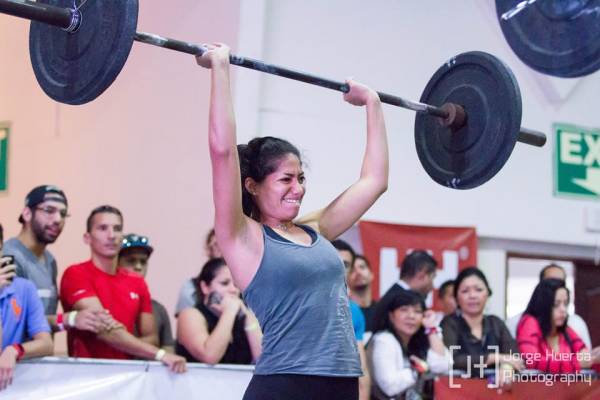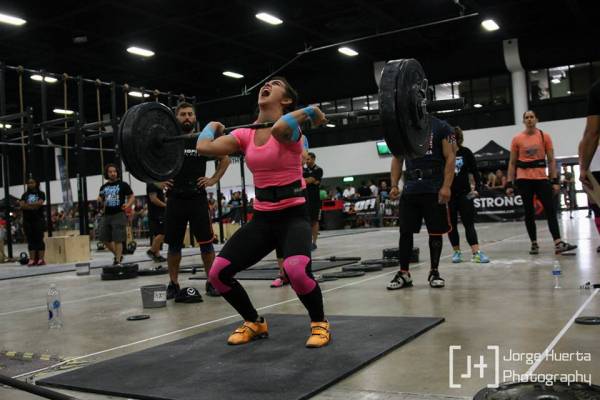The middle portion of pressing lifts is the most problematic. You know this from experience.
This is due to the fact your elbow or knees joints are at about a ninety-degree angle when in mid-press. In a third-class lever, this is the most inefficient position possible, commonly referred to in gym parlance as the “sticking point.”
How you perform there will determine whether you make the lift or not. I’m going to break down the press for you and outline where you’re making your mistakes – and how to fix them.
RELATED: The Safest and Smartest Progression for Building Your Overhead Lifts
The Press Is a Lift of Three Parts
Most barbell exercises involve the arms and/or legs. Each of these limbs is roughly divided in half into an upper and lower portion, separated by a joint. That’s the elbow on the arm and the knee on the leg, as if you didn’t already know.
Most such barbell movements start the concentric portion with the joints closed and then proceed in a direction that opens up the joint. We’re talking here about various presses with the arms and squats and presses with the legs.
RELATED: New Study Pits Barbell Squats Against Leg Press Machine
Any of these exercise movements can be divided into three parts:
- A starting movement
- A transitional movement
- A finishing movement
Due to the third-class levers involved in extending the arms or legs, the starting movement (the first part of the lift) is easy, but the movement gets harder as the arm or leg is extended. You all know this from performing presses or squats. At the start, it’s not that difficult to move the bar at least a little bit. But as the lift continues, it gets more difficult.
“Due to the third-class levers involved in extending the arms or legs, the starting movement (the first part of the lift) is easy, but the movement gets harder as the arm or leg is extended.”
In contrast, the finishing portion of presses and squats (part three) begins with some difficulty, but then gets easier the closer you come to lockout. Once you get to this finishing part of the lift you are generally home free as long as nothing else goes wrong.
The end of the first part is difficult and the start of the third part is difficult, so it’s only natural that the transition in between (the “sticking point”) will also be challenging.
Why the Middle of the Press Is Difficult
It generally doesn’t matter which type of press you are talking about. Whether done overhead or on a flat, incline, or decline bench, they all act the same. You take the bar out of the rack and perform an eccentric movement down to your starting position, (except in the overhead press where you start from the shoulders with no eccentric movement). With arms fully bent you start the press, usually with some extra initial effort (and I don’t mean knee action).
RELATED: The Bench Press Is a Pull: 5 Cues You Might Be Missing

The deltoids and pectorals get the lift moving. With that drive, the bar will come off of the shoulders and chest and move upward. But as we all know, you start running out of power gradually along the barbell’s path. The higher you go, the weaker the position you’re in.
As you keep pressing, you will approach the middle phase of the lift. This is the part you never look forward to – because if you have not given the bar enough initial force, you will run out of gas at this point.
“It’s as if the first part of the press is not important, only the middle, and lifters want to test it without momentum.”
Another reason this phase of the movement becomes difficult is psychological. When the middle is reached, it’s natural for lifters to take their foot off the gas and move gingerly through the sticking point. Why this happens I’m not certain, but it does. It’s as if the first part of the press is not important, only the middle, and lifters want to test it without momentum. This, of course, is the worst thing to do.
If there is enough force put on the barbell to drive it through the sticking point, then the lift gets progressively easier. Barring any other serious error, you should (with determination) be able to lockout the bar in this final phase. So it appears to most that the middle of the press is what will give us the most problems. But is it?
RELATED: Compensatory Acceleration Training: Speed Up Your Strength Gains
Where the Real Problem Lies
The first reaction of those who power out while passing the sticking point is to work on this portion of the lift. This is not a bad idea. It certainly won’t make you weaker. But it may not be where the real problem lies.
“It’s all about fiber recruitment right out of the starting blocks, not about saving energy. If you drive the weight hard enough, you should be able to power sufficiently through the sticking point.”
The problem is more one of not giving the barbell enough force off the chest or shoulders. Lifters who do this may be trying to save energy, thinking they could better use that extra energy in the middle portion of the lift. But that gambit does not work as well as they think it will.
You are far better off driving the bar out of the hole as quickly as possible. It’s all about fiber recruitment right out of the starting blocks, not about saving energy. If you drive the weight hard enough, you should be able to power sufficiently through the sticking point. If you can’t, then the weight is probably just too heavy.
RELATED: The 3 Laws of Muscle Activation in Resistance Training
Once you’re to the finish, the press should feel easier. Do not try to test the weight of the bar and make the middle portion the main part of the lift. You simply do not have enough angular advantage at that point to play that game.
A Lesson From Boxing
Let’s take a lesson from the sport of boxing. When boxers throw a punch, they do not aim for the target so much as they aim for a point six inches behind that target. The difference in fist delivery is dramatic.

Those who aim at the target only end up with a powder-puff punch. Those who aim for the imaginary opponent six inches behind will ensure their punch still has maximum torque when it hits the actual target. So must it be with the press.
Think about driving your bar to a point above the sticking point. This is all one movement. Drive straight through. Do not stop at the bottom of the sticking point and see what it feels like. Believe me, it will feel heavy if you are lifting near your limit.
This idea of testing the feel of the sticking point is not that serious a matter when you are only lifting light weights, such as in warm-up sets. But as the bar approaches maximum, the lifter will become very aware of any slow down during the middle portion of the lift. This unconscious slow-down happens in all kinds of presses. It also happens in squats where many misses can also be blamed on the lifter testing his or her middle range.
“Think about driving your bar to a point above the sticking point. This is all one movement. Drive straight through. Do not stop at the bottom of the sticking point and see what it feels like.”
The Importance of the Drive
I have mentioned before that a jerk is not just a fast press. As the jerk goes overhead, there is not quite the same middle part of the lift as seen in the press. You have a drive similar in concept to the initial part of the press. You also have a lockout that is similar. But the transition point is different.
RELATED: A Jerk Is a Jerk (and a Press Is a Press)
The transition in a jerk is where you split under the bar. The barbell travels upward from your initial leg-drive momentum, while you drive under the bar using your triceps, or pressing, muscles. There is no leverage problem.
But, if you do not have a strong enough jerk drive, the bar will not go high enough for you to start your split under the jerk. The reason this would happen is one of two things:
- The bar is too heavy to drive high enough.
- The bar is not too heavy, but was not driven high enough.
The latter is a problem similar to the one in the press where the lifter does not generate enough force to follow through.

Eliminating Pressing Problems
In order to eliminate these problems you can do several things:
- Train the middle portion of your presses or squats with lockouts from the midpoint position or with some limited range isometric-isotonic work. This will help some.
- Better is to train the bottom part of your lifts. You will get stronger in this position and this will enable you to drive further.
- Don’t forget your psychological training. You must train yourself to give 110% on your initial drives whether you are training presses, squats, or jerks. Commit to the weight and do not be afraid of effort. Don’t wimp out. Just drive it up!
RELATED: Isometric Training: What It Is and How to Do It Correctly
In conclusion, remember you can’t get rid of sticking points in your lifts. It’s an inherent part of the leverage you are given. What you can do is work around that weakness and make the strong parts of the movement as strong as possible.
Photos 1, 2, & 4 courtesy of Jorge Huerta Photography.
Photo 3 courtesy of Shutterstock.






